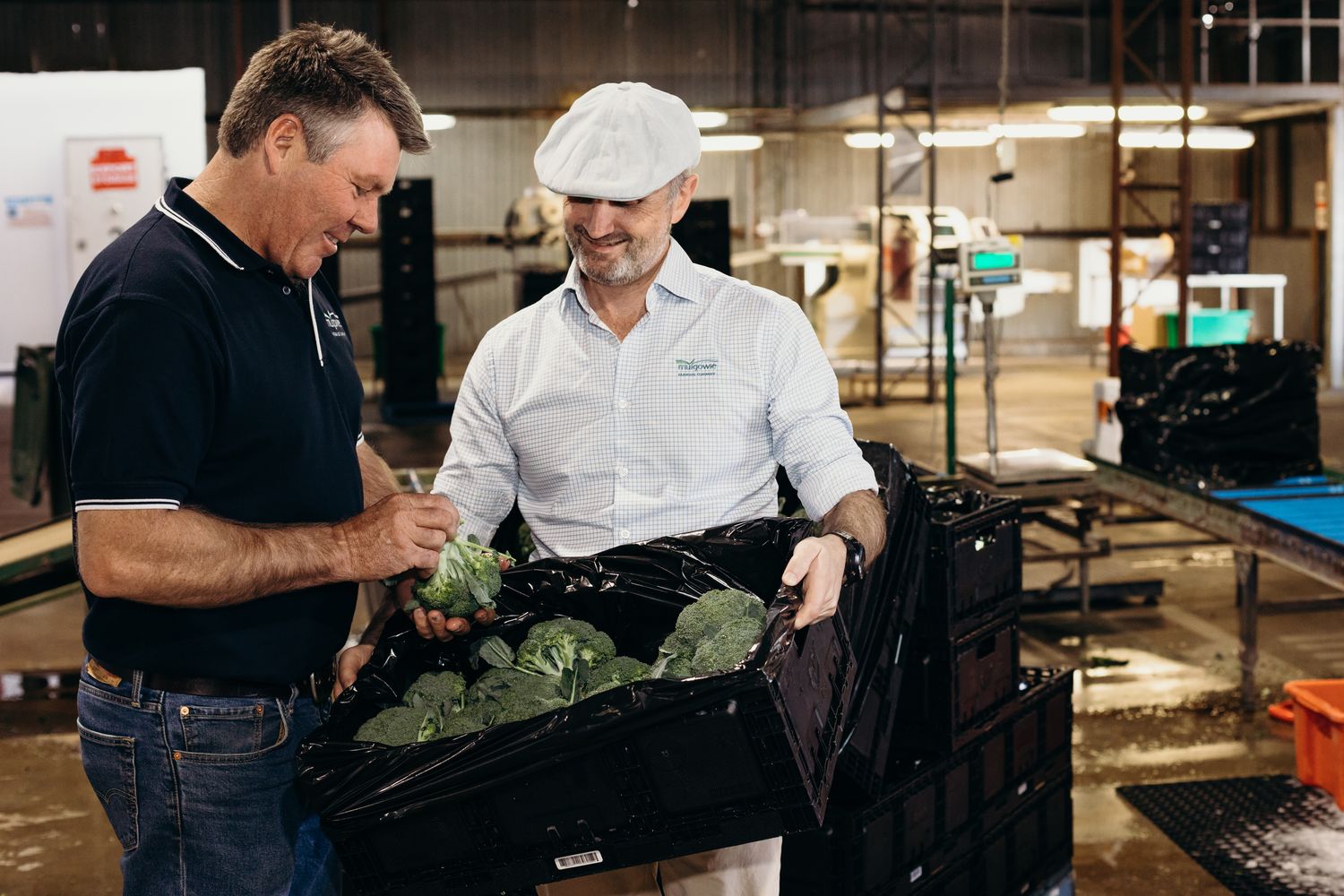
Fresh salad producer group launches food safety standard for fertiliser and soil additive use
10 December 2018
Kerri-Ann Lamb: Leading the way
11 December 2018Using the levy-funded Harvest to Home dashboard, Mulgowie Farms' National Sales Manager Shane Quinn and the rest of the Mulgowie team have been able to collate data on consumer behaviour to ensure the business and its supply chain are aligned on key goals to meet consumer demand.
Fast facts
Name: Shane Quinn
Location: Mulgowie, Queensland
Works: Mulgowie Farms
Grows: Sweet corn, green beans and broccoli
Hort Innovation and Nielsen’s Harvest to Home dashboard has been embraced by Mulgowie Farming Company and the business is reaping the rewards as a result.
The dashboard, which contains data from Nielsen Homescan, a continuous panel of 10,000 households who record their take-home fresh and grocery purchases from all retail outlets, has been an important contributor of data to the company’s decision-making process.
Mulgowie is a family-owned producer growing conventional and organic sweet corn, green beans and broccoli across Australia. With more than 70 years’ growing experience, the business’ mission is to “achieve ‘natural perfection’ by consistently delivering quality, fresh and nutritious products through innovation and sustainable farming practices”.
When illustrating its supply chain and how it connects, Mulgowie National Sales Manager Shane Quinn said the business tries to envision a circular loop rather than a linear or vertical line.
“It is important that our understanding of consumer and market trends is fed into our agronomists, growers and packhouse facility operators so that our planning for volumes required, varieties and preferred pack types are incorporated into our seasonal and long-term planning,” he says.
Likewise, Mulgowie uses its knowledge of farming fresh-quality and nutritious produce to inform its product development and how it connects with consumers.
Shane says that regular team meetings are held to review all data and decide collectively what actions must be undertaken to respond efficiently to consumer needs.
"I’d like other growers to understand that you don’t need to spend a lot of money to get the data we need. I think Hort Innovation and AUSVEG are getting better and better at sourcing, compiling and sharing market and consumer information."
Connecting the dots
Harvest to Home illustrates how Mulgowie’s produce categories are progressing, relative to others. It provides indicators as to whether their initiatives are outperforming other categories and, equally importantly, also delivers key advice on which produce categories consumers are trending towards and away from. This is critical in influencing the company’s future crop selection.
But the circular supply chain planning does not end there. Shane emphasises that it is paramount to combine this valuable data with other crucial information.
“We gather data shared by our retail, export and other customers, by our own regular observation of how people are shopping in store, what innovation is making its way to the shelf and overseas trends reported in the media and at conferences,” he says.
“We then try to knit all of those diverse threads together into a coherent whole, which can aid us in ‘considering the consumer’ at a deeper level.
“I’d like other growers to understand that you don’t need to spend a lot of money to get the data we need. I think Hort Innovation and AUSVEG are getting better and better at sourcing, compiling and sharing market and consumer information, plus there are other sources out there.
“The trick for us is to commit to gather it and consider it in an organised way that is aligned to our own capabilities to action.”

Shane is keen to point out that while quantitative data from Nielsen provides time-specific evidence, it inherently focuses on what has already occurred. The key is to look forward.
“Some qualitative consumer data about trends from Hort Innovation, specific to categories, would also be useful for us to identify future trends and how to trigger consumer response. This has been provided in the past and I’d like it to continue,” he says.
In essence, Shane said the three actions where Harvest to Home most benefited Mulgowie in efficiently meeting consumer needs are:
- Informing a team who are passionate about growing, packing and distributing quality fresh vegetables while always keeping consumers’ interests top of mind.
- Investment in new product development.
- Having objective third-party data, as this helps build a business case to justify that investment.
Vegetable Cluster Consumer Insights Program has been funded by Hort Innovation using the onion, sweetpotato and vegetable research and development levies and contributions from the Australian Government.
This grower profile first appeared in Grower Success Stories, a levy-funded booklet published by AUSVEG to promote real results from levy investment, and was featured in the AUSVEG Weekly Update published 18 December 2018. If you’d like to subscribe to receive AUSVEG publications, use our online subscription form!
You can also read a detailed case study of how Mulgowie Farms uses Harvest to Home data on the Harvest to Home website.
Photography credit: Rowena Dione

